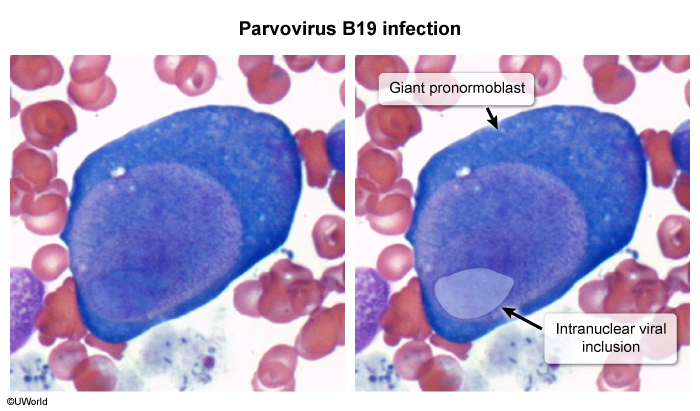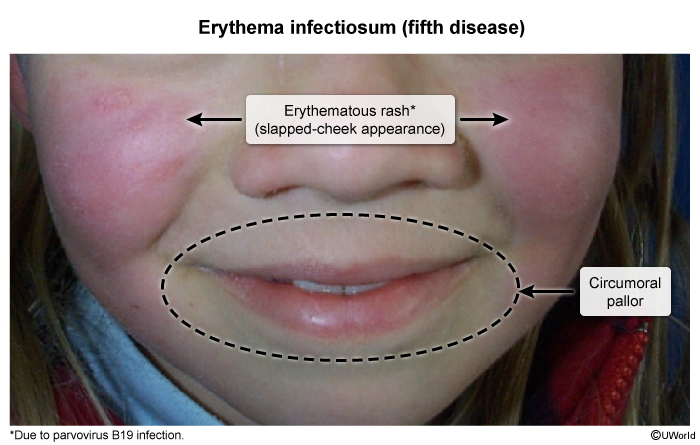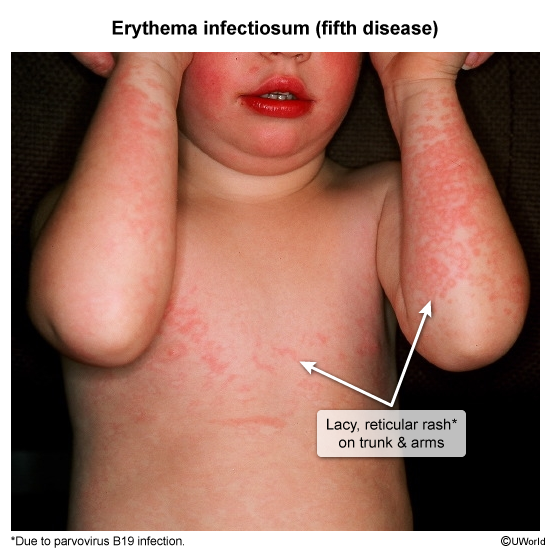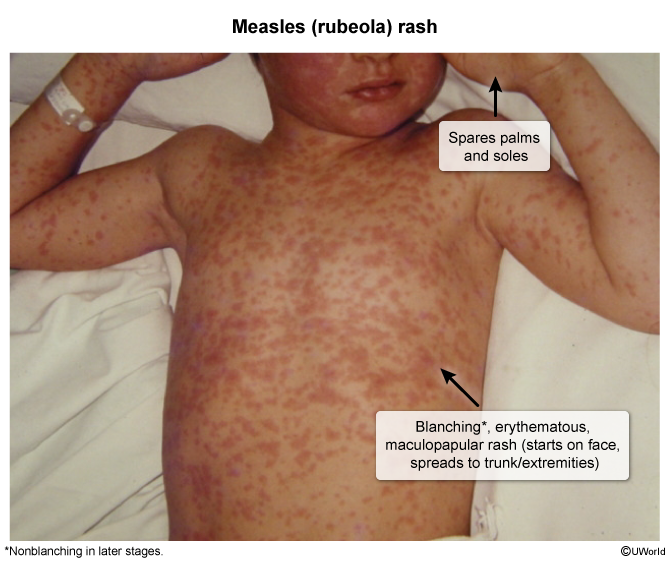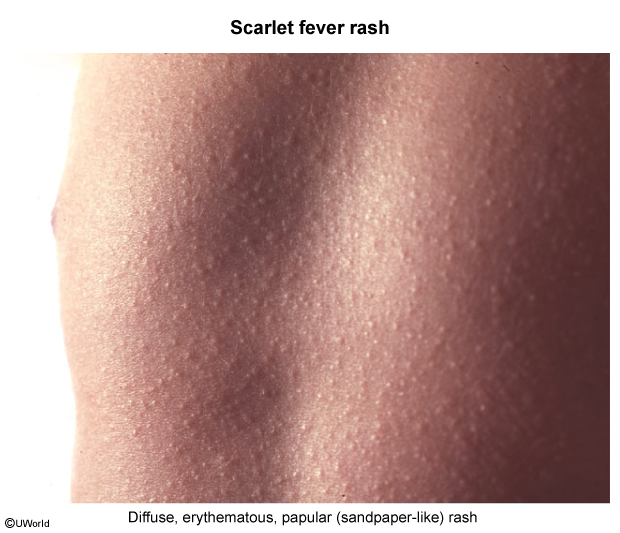Erythema Infectiosum (Fifth Disease)
Article Sections
Introduction
Erythema infectiosum, also known as fifth disease, is a manifestation of parvovirus B19 infection that presents as a common childhood viral exanthem. Although rare, adults can also develop erythema infectiosum following parvovirus B19 infection.
Pathophysiology and risk factors
Parvovirus B19 is a nonenveloped, single-stranded DNA virus that replicates in erythroid progenitor cells. Only these cells express the cell surface receptor for parvovirus B19 (P blood group antigen). Infection prevents erythroid progenitor cell maturation, leading to the formation of giant pronormoblasts (much larger than normal red blood cells [RBCs]) with glassy, intranuclear viral inclusions (Image 1). Viral replication induces erythroid progenitor cell lysis, temporarily halting erythropoiesis.
Most patients remain asymptomatic because the remaining RBCs have a lifespan of several months. However, even brief interruptions in RBC production can cause severe anemia (eg, transient aplastic crisis) in patients with underlying hematologic disorders with accelerated RBC turnover (eg, sickle cell anemia).
Continue Learning with UWorld
Get the full Erythema Infectiosum (Fifth Disease) article plus rich visuals, real-world cases, and in-depth insights from medical experts, all available through the UWorld Medical Library.
Figures
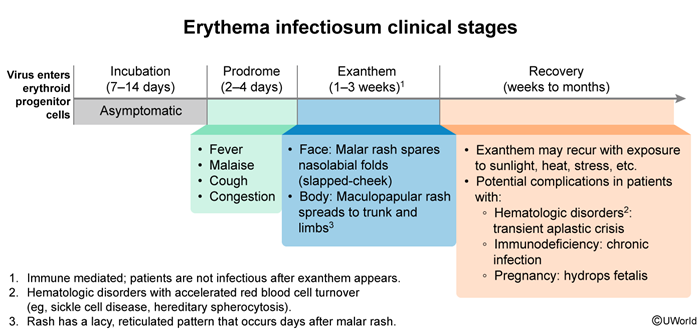
Images
